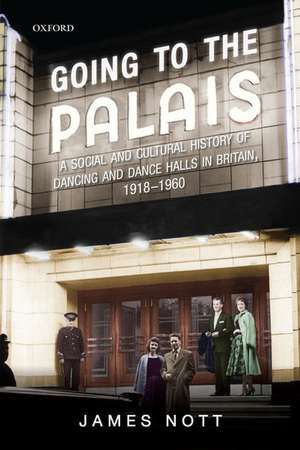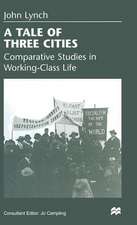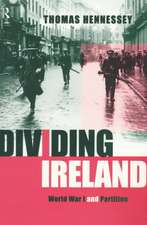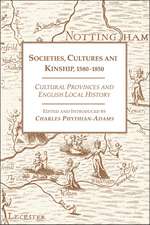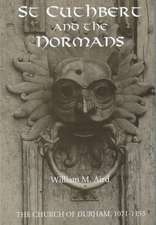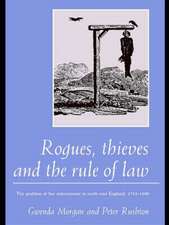Going to the Palais: A Social And Cultural History of Dancing and Dance Halls in Britain, 1918-1960
Autor James Notten Limba Engleză Paperback – 18 iun 2020
| Toate formatele și edițiile | Preț | Express |
|---|---|---|
| Paperback (1) | 282.63 lei 10-16 zile | |
| OUP OXFORD – 18 iun 2020 | 282.63 lei 10-16 zile | |
| Hardback (1) | 839.59 lei 31-37 zile | |
| OUP OXFORD – 3 sep 2015 | 839.59 lei 31-37 zile |
Preț: 282.63 lei
Preț vechi: 306.89 lei
-8% Nou
Puncte Express: 424
Preț estimativ în valută:
54.08€ • 56.62$ • 44.75£
54.08€ • 56.62$ • 44.75£
Carte disponibilă
Livrare economică 04-10 martie
Preluare comenzi: 021 569.72.76
Specificații
ISBN-13: 9780198866633
ISBN-10: 0198866631
Pagini: 344
Ilustrații: 23 black and white illustrations
Dimensiuni: 157 x 234 x 20 mm
Greutate: 0.52 kg
Editura: OUP OXFORD
Colecția OUP Oxford
Locul publicării:Oxford, United Kingdom
ISBN-10: 0198866631
Pagini: 344
Ilustrații: 23 black and white illustrations
Dimensiuni: 157 x 234 x 20 mm
Greutate: 0.52 kg
Editura: OUP OXFORD
Colecția OUP Oxford
Locul publicării:Oxford, United Kingdom
Recenzii
Review from previous edition The richness and depth of the study is exemplified by its geographical scope....This monumental book on an important aspect of popular culture in the twentieth century provides a template for future research on dance halls and associated forms of leisure. The depth of research, sources, and critical reflection already marks it out as a classic. It should be widely read and discussed by business historians, labor historians, and scholars who are seeking to understand the social and cultural life of the British people in the twentieth century.
In its range of topics, density of assembled evidence and consistent, subtlety of argument, this book is set to become the definitive account of dance halls in 20th century Britain.
Nott puts the well-worn concept of gender, class and age through their paces. He shows that austerity and economic insecurity boosted the desire to dance while affluence gradually slowed it down Nott has important things to say about a period in British history where dancing became much more than a craze.
Meticulously researched.
a superb analysis of gender and race relations, as well as a fascinating look at an industry that had once rivalled cinema as an ultimate pastime.
Nott has produced what I think will prove to be a definitive account of dancing and dance halls in the twentieth century. Going to the Palais, is a very impressive work which offers an academic consideration of the halls from multiple perspectives, including corporate ownership and patronage with particular reference to race, class and gender, and the moral concerns their patrons provoked ... Going to the Palais was one of the most notable works of social history to appear in 2015. It was a pleasure to read.
utilizes a rich gathering of material to paint a detailed picture of dancing across the period from 1918 to 1960. Nott's book invites a readership beyond the field of leisure history, making a valuable contribution to histories of gender and class in the twentieth century and raising significant questions about leisure as a vehicle for social and cultural change.
Nott's work is impressively researched and refreshingly inclusive of the whole national context ... the book offers a detailed picture painted on a broad canvas and will appeal to both the scholar and the general reader. It makes an important contribution by firmly and unapologetically claiming popular dance as a vital activity in twentieth century cultural history.
a particularly welcome contribution to modern British studies and one that will undoubtedly be widely read beyond the field of history ... a pleasure to read.
This is a major work ... The research, drawing on periodicals, Mass Observation and specially conducted interviews, is impeccable. More importantly, the analysis is persuasive, identifying the dance hall as a crucial space in modern popular culture. From this book, it becomes clear that class was not only the only fault line in British society. The nation was divided into those who could dance and those who couldn't.
a landmark study ... Going to the Palais stands as an exemplary work of social and cultural history, an extensively informed and illuminating recovery of a widely embraced but under-studied leisure pursuit that reveals much of popular values and practice and cultural politics at large.
In its range of topics, density of assembled evidence and consistent, subtlety of argument, this book is set to become the definitive account of dance halls in 20th century Britain.
Nott puts the well-worn concept of gender, class and age through their paces. He shows that austerity and economic insecurity boosted the desire to dance while affluence gradually slowed it down Nott has important things to say about a period in British history where dancing became much more than a craze.
Meticulously researched.
a superb analysis of gender and race relations, as well as a fascinating look at an industry that had once rivalled cinema as an ultimate pastime.
Nott has produced what I think will prove to be a definitive account of dancing and dance halls in the twentieth century. Going to the Palais, is a very impressive work which offers an academic consideration of the halls from multiple perspectives, including corporate ownership and patronage with particular reference to race, class and gender, and the moral concerns their patrons provoked ... Going to the Palais was one of the most notable works of social history to appear in 2015. It was a pleasure to read.
utilizes a rich gathering of material to paint a detailed picture of dancing across the period from 1918 to 1960. Nott's book invites a readership beyond the field of leisure history, making a valuable contribution to histories of gender and class in the twentieth century and raising significant questions about leisure as a vehicle for social and cultural change.
Nott's work is impressively researched and refreshingly inclusive of the whole national context ... the book offers a detailed picture painted on a broad canvas and will appeal to both the scholar and the general reader. It makes an important contribution by firmly and unapologetically claiming popular dance as a vital activity in twentieth century cultural history.
a particularly welcome contribution to modern British studies and one that will undoubtedly be widely read beyond the field of history ... a pleasure to read.
This is a major work ... The research, drawing on periodicals, Mass Observation and specially conducted interviews, is impeccable. More importantly, the analysis is persuasive, identifying the dance hall as a crucial space in modern popular culture. From this book, it becomes clear that class was not only the only fault line in British society. The nation was divided into those who could dance and those who couldn't.
a landmark study ... Going to the Palais stands as an exemplary work of social and cultural history, an extensively informed and illuminating recovery of a widely embraced but under-studied leisure pursuit that reveals much of popular values and practice and cultural politics at large.
Notă biografică
James Nott is a social and cultural historian specialising in twentieth-century British culture and society. He is author of Music for the People: Popular Music and Dance in Interwar Britain (2002) and co-editor of Classes, Politics, and Cultures: Essays in British History in Honour of Ross McKibbin (2011). He is currently working on a history of masculinity in twentieth century Britain and the links between race and dance.
